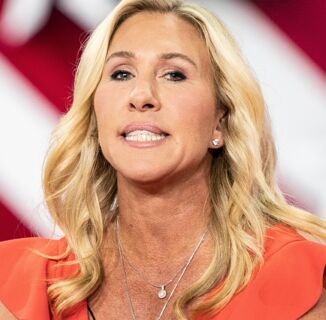One week before Valentine’s Day, Princess and her boyfriend ended their four-year-long relationship.
“He stood by my side when I transitioned, when my parents kicked me out of the house, and he promised to never leave my side,” she tells me. “Then he kicked me to the curb like an empty bottle in the street.”
I’d been Facebook friends with Princess for quite some time now, and I always anticipated her blissfully-in-love statuses. However, I had not seen any of those posts for several months. Nosily, I sent her a message asking how she and her lover had been. That’s when she told me that they had been broken up for a while.
The reason? Pre-Exposure Prophylaxis (PrEP).
“I got on PrEP after a [mentally ill] homeless man ran up to me, grabbed my arm, and took a big chunk out of it,” Princess says. She says the man bit her, and she fought him off, then ran away as quickly as she could.
The next day, Princess went to her local urgent care.
“When my doctor told me that I could have been exposed to HIV, I didn’t hear anything else,” she says. “My heart was going to explode. Then my doctor told me about a 28-day [combination of pills] that can prevent HIV infections after someone is exposed to the virus.”
Research shows that combining PEP (Post-Exposure Prophylaxis) and PrEP (Pre-Exposure Prophylaxis) greatly reduces the likelihood of new HIV infections if taken 72 hours after being exposed to the virus.
When Princess told her boyfriend about the vicious attack, he became irate, wanting to find the mentally ill homeless man who attacked her. However, his anger quickly shifted towards Princess the moment she told him that she has to take PEP and PrEP for 28 days to avoid a potential HIV infection.
“He accused me of cheating on him with HIV positive people, called me a disgusting cum dumpster, and broke up with me,” Princess says.
This is not uncommon, sadly. Since the FDA approved PrEP in 2012, it quickly became well-known as the “slut pill.” I, too, felt reluctant to share that I was on PrEP. My hesitation did not derive from a fear of being slut-shamed, but I was not comfortable with the stigma associated with the medication. This stigma associates people, generally queer people, with unsafe sex with total strangers. Many people assume that people on PrEP are being infected with other sexually transmitted diseases or infections—and are spreading them.
This reminds me of the time that I was shuffling through Grindr profiles, and I noticed a profile with a bio that said, “No fats, fems, or Truvada whores!” Ironically, the user was openly HIV-Positive and was looking for unprotected sexual encounters.
I was confused, and I wanted to understand his mindset; although my expectations for an intellectual conversation was extremely low due to the whole “no fats, no fems” thing. I asked him why, and he gave me an answer I expected: “Because faggots who take PrEP get other STDs,” then he blocked me.
Is this true?
Well, a UCLA study found that gay men on PrEP are 45 times more likely to contract syphilis, and they are 25 times more likely to be infected with Gonorrhea.
So, is this stigma justified? Absolutely not.
Typically, when a person obtains or is knowingly exposed to a sexually transmitted disease/infection, their sexual behavior changes, research proves. STIs like syphilis, chlamydia, and gonorrhea are treated quite easily, and those who are infected once are far less likely to become infected again. However, if someone is infected with HIV, there is no known cure.
Princess, months later, is still HIV-Negative and hoping that her ex-boyfriend comes back to her, whether he deserves her or not. But she makes one thing clear: she’s not giving up the PrEP. If he wants her back, he has to give up his dangerous thinking towards a pill that is slowly bringing new HIV infections in the LGBTQ community to an end.
Don't forget to share:
Help make sure LGBTQ+ stories are being told...
We can't rely on mainstream media to tell our stories. That's why we don't lock our articles behind a paywall. Will you support our mission with a contribution today?
Cancel anytime · Proudly LGBTQ+ owned and operated
Read More in Impact
The Latest on INTO
Subscribe to get a twice-weekly dose of queer news, updates, and insights from the INTO team.
in Your Inbox












